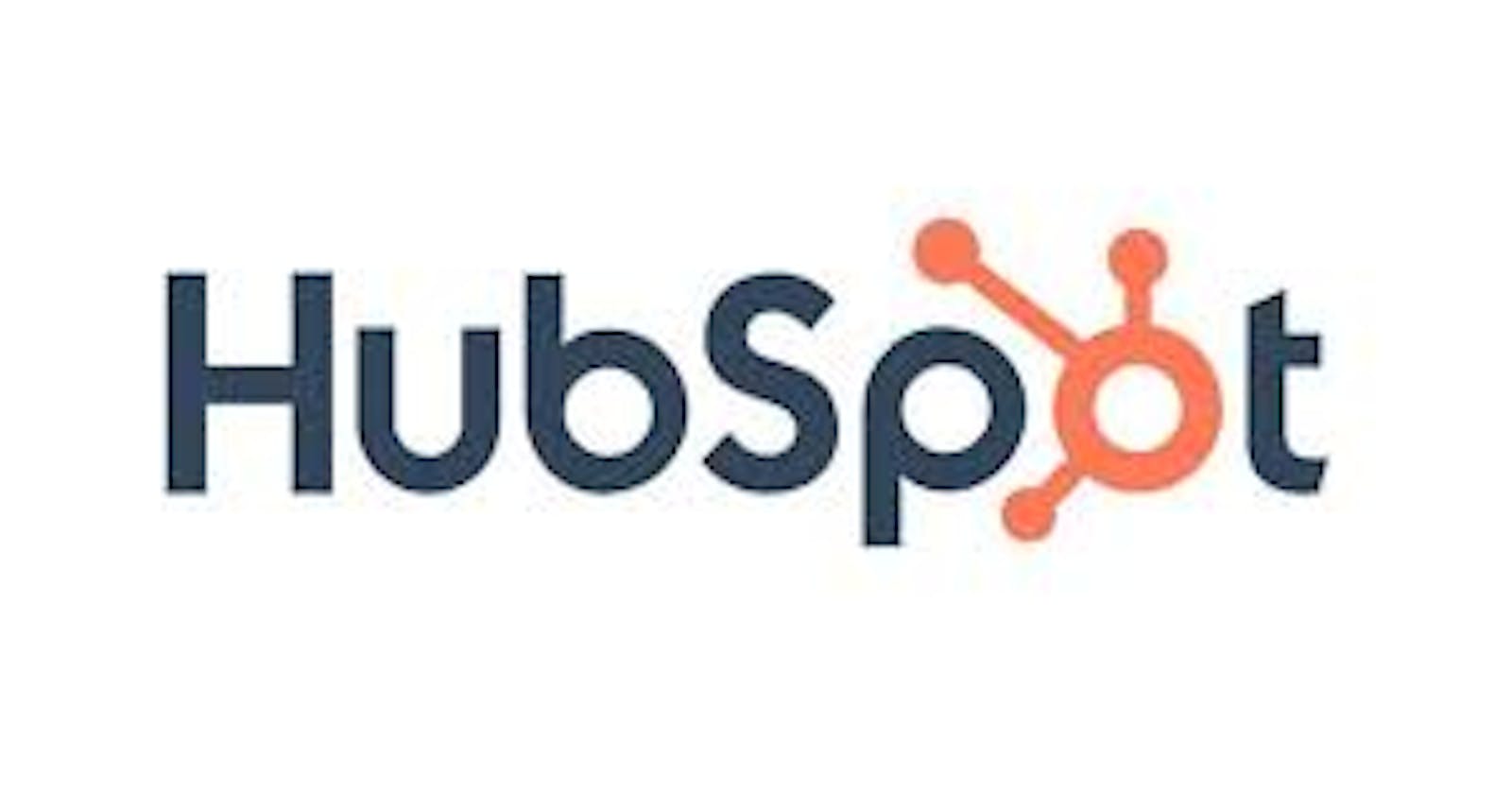Zoho? Hubspot? Zendesk? Here is some information about the Hubspot CRM tool
CRM PORTFOLIO BOOTCAMP TASK
WEEK 4 REPORT
In this week’s task, our team carried out an extensive research on three CRM tools – ZOHO, Hubspot and Zendesk. We considered their features, economic requirement and limitations.
We decided to make the Hubspot CRM tool our choice because of its many advantages over other CRM tools.
Below are the benefits of using the Hubspot CRM in the E-commerce business.
WHY HUBSPOT CRM IN THE E-COMMERCE BUSINESS? Some benefits of using HubSpot CRM Software include:
• It is free and easy to use. • Social Media Integration. • Website Integration. • Track Communications. • Customization and Real-Time Updates.
It's highly customizable, allowing you to track the customer data relevant to your E-Commerce business. The HubSpot CRM will track your customer interactions, which helps you build up data to see what's working and what's not. What gives Hubspot a competitive edge over other CRM tools is that it offers enterprise-grade software tools at a lower price. Its marketing automation solution boasts automated email marketing, social media campaigns, lead generation, and marketing automation. Being flexible and dynamic in the E-Commerce business is a must. The old stagnant strategies for growth no longer work. Customers know they have choices; convincing them to buy from you, and continue to buy from you takes effort and strategy. To do that, you need a comprehensive tool that can elevate your ability to increase your conversion rate. Hubspot serves this purpose.
HubSpot has been quietly changing the E-Commerce game for years. By combining robust inbound methodology with the tools to capture customers, they’ve succeeded in creating a framework that is truly a game-changer. Applying HubSpot’s technology and strategies to your site store can dramatically impact sales and revenue.
E-Commerce stores need to step their sales game up—and HubSpot can help do that in a few different ways. But before we dive into some of the other benefits of HubSpot, I’ll give a quick rundown of the platform’s best tools:
• HubSpot CRM: Helps organize, track, and build relationships with leads and customers. It’s highly customizable, allowing you to track the customer data relevant to your eCommerce business. The HubSpot CRM will track your customer interactions, which helps you build up data to see what’s working and what’s not. (It’s also completely free).
• CMS Hub: Content management software that’s flexible for marketers and helps you give your customer a personalized experience. Includes support for SEO recommendations and a drag-and-drop editor. This tool is perfect for creating one-off landing pages that are quick and convenient.
• Marketing Hub: Marketing software aimed at increasing traffic and conversion, and running scalable inbound marketing campaigns. It allows you to manage social media, email, and digital advertising from one central location.
• Sales Hub: Sales software that helps you get deeper insights into visitors, as well as automate your sales funnel.
• Service Hub: Customer service software that helps you connect with customers and understand how they view their experience on your website. It includes helpful tools such as customer surveys that then transfer into data that is available on your HubSpot dashboard. All of these tools work hand-in-hand with your E-Commerce shop. Let’s explore how.
Data Insights and Easy Customer Tracking I’m sure you’re collecting a lot of data—but are you doing anything with it? If you don’t quite understand how to interpret and explain your observations, you’re limiting your growth.
HubSpot allows E-Commerce businesses to track their customers more precisely. When you install the HubSpot tracking script, you will get a clear picture of the customer journey. HubSpot compiles your data in one place to help you understand your customers and optimize your strategy. This component allows you to build the ideal customer workflow and improve your conversion rate. By understanding your data and tracking shopping cart touch points, you can understand your customer.
Marketing Automation and Shopping Cart Workflows Getting your email marketing strategy right is much easier when you’re working in HubSpot. HubSpot has integrations that allow you to apply personalization to email templates effortlessly. If you are using Shopify Plus or BigCommerce, you can utilize the automated workflows that come with HubSpot integration. The automated workflows allow you to customize marketing campaigns depending on where the customer is in their journey.
For example, let’s look at abandoned carts. When your customer leaves or abandons their shopping cart, you can apply several workflows to re-engage the customer. You can send a nurturing email directly to the customer linking or mentioning the specific product they left in their cart. Or you can even suggest they try a smaller or bigger size of the same product. This strategy will improve your cart recovery and provide a convenient way for customers to pick up where they left off.
Instant Communication and Conversation Automation Convenient communication is everything; humans thrive on instant connection. Live messaging or chat is now the norm, and users will often opt for these communication channels before they will call or send an email. You can build better relationships with your customers through live chat functionality.
Lots of apps and E-Commerce integrations have live chat features; that’s not a ground-breaking concept unique to HubSpot. What sets HubSpot live chat apart is the HubSpot Chatbot builder. This functionality allows you to create messenger bots that can be personalized with messages for your customer. When live chat isn’t always an option, or your customer service team is offline, chatbots can serve a vital role in facilitating communication.
Using a chatbot as a starting point in your live chat flow will allow you to identify users who are contacting your team for necessary information versus those who are contacting you for advanced needs. Customers looking for quick information can answer preset questions to help direct them to the ordinary, frequently asked questions. If during the conversation flow, the user indicates they may need help with a refund or problems with shipping, that user can be directed to a liver user through live chat.
Check out the Inbound Way E-Commerce is an ever-changing beast, and your ability to pivot and respond to customer data is critical. HubSpot is an under-utilized tool for E-Commerce businesses. Using an E-Commerce platform such as Shopify or BigCommerce and integrating it with HubSpot can give your customers a seamless experience, while also helping you better understand the customer’s mind.
For obvious reasons, getting inside the mind of your customers will lead to growth. By incorporating HubSpot strategies into the E-Commerce world, you can make your marketing targeted, personalized, and more effective.

